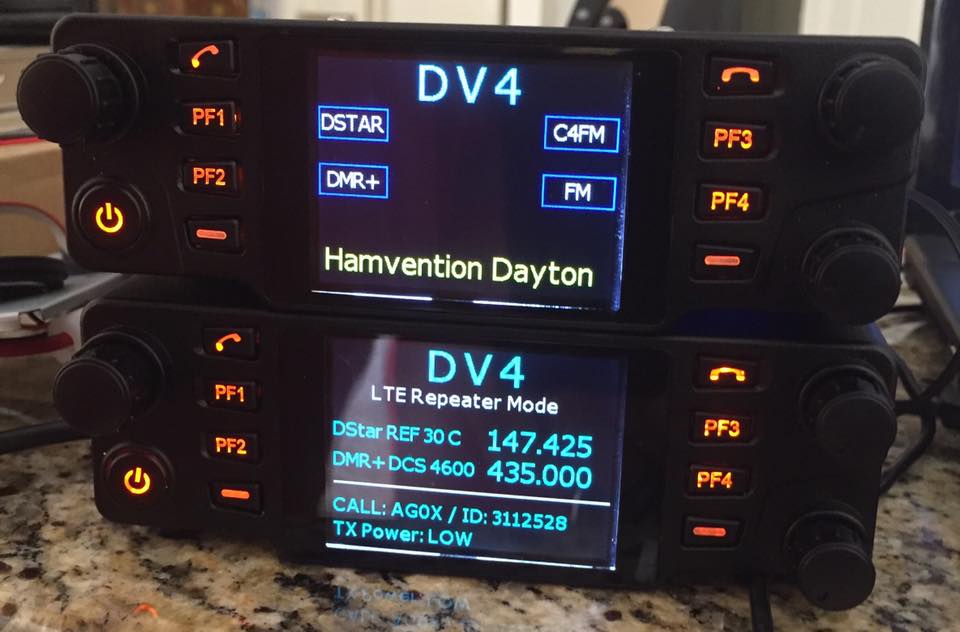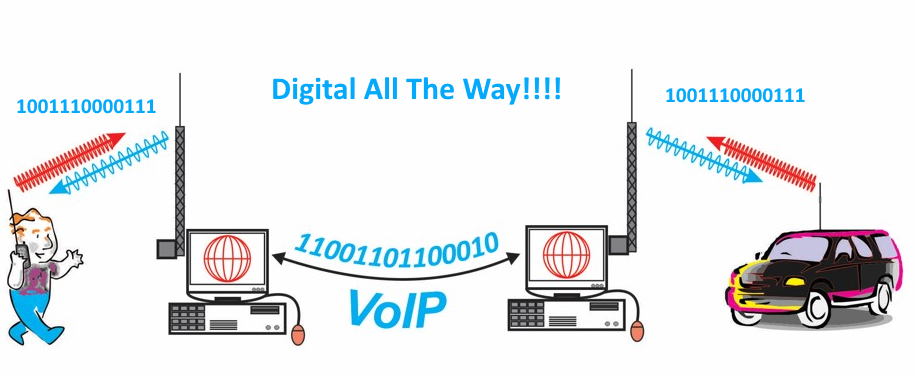 The Cacophony of Digital Voice Continues (Part 1)
The Cacophony of Digital Voice Continues (Part 1)
It wasn’t that long ago that I commented on the state of digital voice on the VHF/UHF ham bands: Digital Voice Balkanization. We have three main competing (incompatible) standards in the running: D-STAR, DMR and Yaesu System Fusion (YSF). At a high level, these three formats all do the same thing but there are significant differences in implementation (See Comparison of Amateur Radio DV by Roland Kraatz W9HPX.) All three of these are (arguably) open standards, allowing anyone to implement equipment that supports the standard. However, the reality is that D-STAR is still largely an ICOM system (with Kenwood joining the party), YSF is mostly a Yaesu system and DMR is…well, DMR is not deeply embraced by any large amateur radio equipment supplier. Instead, DMR is promoted heavily by Motorola for the commercial market via their MOTOTRBO product line. Another big factor is the availability of DMR radios from some of the low cost providers in the ham market: Connect Systems, Tytera MD-380. Baofeng has also announced a DMR radio but it has some potential shortcomings.
D-STAR has a clear head start versus the other DV standards and is well-entrenched across the US and around the world. DMR and YSF are the late comers that are quickly catching up. To put some numbers on the adoption of DV technology, I took at the digital repeater listings in the August issue of the SERA Repeater Journal. SERA is the coordinating body for Georgia, Kentucky, Mississippi, North Carolina, South Carolina, Tennessee, Virginia and West Virginia. This is a large region that includes rural and large urban areas, so perhaps it is a good proxy for the rest of the country. I just considered the listings for D-STAR, DMR and YSF repeaters, some of which are set up as mixed-mode analog and digital repeaters.
D-STAR 161 39% DMR 136 33% YSF 121 29% Total: 418 100% SERA Repeater Journal - August 2016
I was definitely surprised at how the DMR and YSF numbers are in the ballpark with D-STAR. Of course, we don’t know for sure how many of these repeaters are actually on the air or how many users are active on each one. Still, pretty impressive numbers. (And I did not bother to count the analog FM repeaters but those numbers are way higher, of course.)
It is the repeater clubs and repeater owners that drive the deployment of infrastructure for new technology. To some extent, they are driven by what their users want but also by their own technical interests and biases. One of the positive factors for DMR is that most of these systems are Motorola MOTOTRBO. Hams involved in commercial land mobile radio are exposed to that technology and naturally port it into the amateur radio world. MOTOTRBO is actually not that expensive and it’s built for commercial use. YSF received a big boost when Yaesu offered their repeater for $500 to clubs and owners that would put them on the air. By using Yaesu’s mixed analog/digital mode, it was an easy and attractive upgrade for aging repeater equipment.
Disruption From New Players
Early on in the world of D-STAR, the DV Dongle and DV Access Point by Robin AA4RC allowed hams to access the D-STAR network without needing a local repeater. This basic idea has continued and evolved in several different directions. For example, the DV4Mini is a cute little USB stick that implements a hot spot for…wait for it…D-STAR, DMR and YSF. This is very affordable technology (darnright cheap) that lets any ham develop his or her own local infrastructure. We don’t need no stinkin’ repeater. DV MEGA is another hot spot, supporting D-STAR, DMR and YSF. I guess somebody forgot to tell these guys they have to choose one format and religiously support only that one.

OK, so that’s one way to solve the babel fish problem…support all three formats in one device. And that’s what the DV4 mobile radio promises to do as well: “This DV4mobile is a tri-band VHF/UHF transceiver (2m, 1.25m and 70cm) that supports DMR, D-STAR and C4FM ( or “fusion”) all in one box.” Heck, let’s throw in LTE while we are at it, it’s only software. This site says the radio will be available Q4 2016. Well, it’s Q4, so maybe it will be here soon.
Conclusions
So let’s wrap up Part 1 of this story. What can we conclude?
- For the foreseeable future, we will have D-STAR, DMR and YSF technologies being used in amateur radio. I don’t see one of them dominating or any of them disappearing any time soon.
- Equipment that handles all three of those DV modes will be highly desirable. It is the most obvious way to deal with the multiple formats. Software-defined radios will play a key role here.
- A wild card here is DMR. It benefits from being a commercial land mobile standard, so high quality infrastructure equipment is available (both new and used gear). And DMR is being embraced by suppliers of low cost radios as well. This combination may prove to be very powerful.
The post The Cacophony of Digital Voice Continues (Part 1) appeared first on The KØNR Radio Site.















Bob: While not one of the most popular formats, there are a number of systems using P25 format from public safety. Mostly Phase 1, as that is where the surplus equipment is.
Most fascinating.
The DV4 radio is supposed to be around 800~1200 USD, so I like the option by DV_Mega and the NW Digital group (including Dutch_Star)for the 9600 baud interface for existing radios. I am looking for when they are ready to go without too much Linux setup that can be very frustrating for those of us that can do it but not without a lot of head scratching.
But then — the DV4 with two AMBE300 chips can also translate from one DV system into another in live real time, and that is worth a whole heck of a lot!!!
I’m just going Digital (in addition to “Real” ham ha ha) and I’m really looking forward to it. I’m initially going with D-STAR but also am surprised and impressed with the “market share” of the other two mentioned in this article.